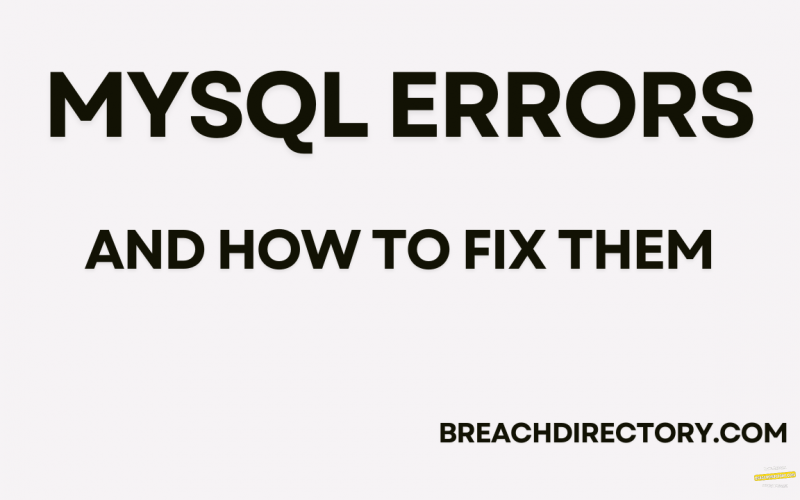What are the most common MySQL error messages and how to fix them? Learn today with BreachDirectory.com!
MySQL error messages are familiar to every DBA and developer. These kinds of messages are the source of much confusion for some and the source of curses for others. However, whatever’s the case for you, be sure – MySQL errors aren’t there to hurt us. Rather, they’re displayed for us to better understand that something is wrong with our queries! Here’s a list of the most common MySQL error messages you will encounter.
Most Common MySQL Error Messages
Error 1040: Too many connections.
This error means that MySQL has run out of the maximum number of connections it can handle (by default, MySQL can handle 100 simultaneous connections.)
MySQL can run out of connections if your queries are slow, your database schema is designed improperly, or simply due to a bad MySQL configuration.
Error 1045: Access denied.
This MySQL error most often occurs when a user is trying to do something within MySQL but doesn’t have the necessary privileges to execute an action. Double-check the privileges for the user that just ran the query.
Error 1064: Syntax error.
This MySQL error is quite self-explanatory and it occurs due to a SQL syntax error. Double-check the SQL query that just executed: are you sure you’re not adding an unnecessary quote or two?
Error 1114: The table is full.
This MySQL error occurs due to the disk being full. Release some space, Luke! In other words, you need to delete some files from the hard drive in question.
Error 2006: MySQL Server has gone away.
This database error is frequently accompanied with a low value of the max_allowed_packet setting. Double-check and increase its value if necessary.
Error 2008: MySQL client ran out of memory.
You’re trying to view so much data that MySQL runs out of the memory allocated to it. Have you tried viewing the same data set with a text editor like EmEditor suitable for viewing large files or splitting the file into chunks and uploading it anew?
Error 2013: Lost connection during query.
This database error pops up when the connection between your application and the MySQL database has been lost. This can happen when the database waits too long to execute the query and closes the connection as a result. To fix this MySQL error, increase the values of the wait_timeout and interactive_timeout variables by adjusting them in my.cnf or adjusting them with a SET GLOBAL query like so (X is the amount of time in seconds):
SET @@GLOBAL.wait_timeout=X;
SET @@GLOBAL.interactive_timeout=X;
You should now be good to go.
Summary
This blog has outlined the most common MySQL error messages you will encounter. Have you encountered some of them already? No? Well, the good news is that these error messages can be squashed easily once you know what’s behind them – this blog has told you exactly what is!
Stay tuned, follow BreachDirectory on X (Twitter), Facebook, and LinkedIn, and until next time.
FAQ
What is the Most Common MySQL Error Message?
The most common MySQL error message would probably be the Error 1064 denoting a syntax error. To overcome such a MySQL error, make sure your syntax is grammatically correct.
How to Optimize MySQL for High Performance?
To optimize MySQL for high performance and avoid mentioned and related MySQL errors, BreachDirectory recommends reading Hacking MySQL: Breaking, Optimizing, and Securing MySQL for Your Use Case by Lukas Vileikis. The book will tell you what’s happening behind the slow-performing queries within your database instance, how to optimize them for high performance, and how to secure your MySQL database from hackers so you don’t fall victim to data breaches.
